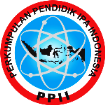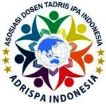E-Module Validation Based on Contextual Teaching and Learning for High School Optical Instruments
Abstract
In this technological era, innovation is needed to improve the quality of education. Teachers are required to be able to integrate information and communication technology to produce teaching materials since the form of print media have gradually shifted to electronic media. The purpose of this research is to develop an e-module based on contextual teaching and learning which is valid for high school optical instruments. In this study, validation was carried out by 3 experts consisting of material experts, media experts and linguists. The data collection technique was carried out by providing a validation questionnaire in the form of a checklist. The data were analyzed using descriptive analysis by calculating the average of each indicator used to determine the validity of the developed e-module. The results of the study provide information that the e-module based on contextual teaching and learning on the material for optical high school instruments developed is valid with valid. The average score of the validation results obtained ranges from 3.00-4.00 so e-module belongs to valid. It means e-module has been successfully developed and it can be used in learning to enhance better teaching and learning process.
Keywords: e-module, contextual teaching and learning, optical instruments, validation
Full Text:
PDFReferences
Aprianti, R., Desnita, & Budi, E. (2015). Pengembangan Modul Berbasis Contextual Teaching and Learning (CTL) Dilengkapi Dengan Media Audio- Visual Untuk Meningkatkan Hasil Belajar Fisika Peserta Didik Sma. Prosiding Seminar Nasional Fisika (E-Journal) SNF2015.
Arenas, E. (2015). Affordances of learning technologies in higher education multicultural environments. Electronic Journal of E-Learning.
Aripin, W. A., Sahidu, H., & Makhrus, M. (2021). Efektivitas Perangkat Pembelajaran Fisika Berbasis Model Problem Based Learning untuk Meningkatkan Kemampuan Pemecahan Masalah dan Kemampuan Berpikir Kritis Peserta Didik. Jurnal Penelitian dan Pembelajaran Fisika Indonesia. https://doi.org/10.29303/jppfi.v3i1.120
Azhar. (2008). Pendidikan Fisika dan Keterkaitannya dengan Laboratorium. Jurnal Geliga Sains 2 (1), 7-12. https://jgs.ejournal.unri.ac.id/index.php/JGS/article/view/1582
Azhar, Herfana, P., Nasir, M., Irawan, D., & Islami, N. (2021). Development of 3D physics learning media using augmented reality for first-year Junior high school students. Journal of Physics: Conference Series. https://doi.org/10.1088/1742-6596/2049/1/012036
Chiappe, A., & Lee, L. L. (2017). Open Teaching: a New Way on E‑learning?. Electronic Journal of E-Learning, 15(5), pp370-384.
Dewi, P. Y. A., & Primayana, K. H. (2019). Effect of Learning Module with Setting Contextual Teaching and Learning to Increase the Understanding of Concepts. International Journal of Education and Learning. https://doi.org/10.31763/ijele.v1i1.26
Febrianti, F. A. (2021). Pengembangan Digital Book Berbasis Flip PDF Professional untuk Meningkatkan Kemampuan Literasi Sains Siswa. Caruban: Jurnal Ilmiah Ilmu Pendidikan Dasar, 4(2), 102-115.
Inriani, I., Azhar, A., & Nasir, M. (2021). Development of Learning Devices Using Creative Problem Solving (CPS) Models on Static Electricity Material. Jurnal Penelitian Pendidikan IPA, 7(SpecialIssue), 213-217.
Irawan, D., Saktioto, ., & Ali, J. (2010). Linear and triangle order of NX3 optical directional couplers: variation coupling coefficient. Photonic Fiber and Crystal Devices: Advances in Materials and Innovations in Device Applications IV. https://doi.org/10.1117/12.862573
Kemdikbud. (2018). Tips dan Trik Penyusunan E-Modul. Dit. Pembinaan SMA. Ditjen Pendidikan Dasar dan Menengah.
Khusnul, F., Nasir, M., & Azhar. (2022). Optics Visualization Web-Based as A Physics Learning Media in Senior High School. Journal of Educational Sciences, 6(1), 188-199.
Komikesari, H., Mutoharoh, M., Dewi, P. S., Utami, G. N., Anggraini, W., & Himmah, E. F. (2020). Development of e-module using flip pdf professional on temperature and heat material. Journal of Physics: Conference Series. https://doi.org/10.1088/1742-6596/1572/1/012017
Lawhon, D. (1976). Instructional development for training teachers of exceptional children: A sourcebook. Journal of School Psychology. https://doi.org/10.1016/0022-4405(76)90066-2
Mahardika, I. K., Delftana, R. E., Rasagama, I. G., Suprianto, Rasyid, A. N., & Sugiartana, I. W. (2020). Practicality of physics module based on contextual learning accompanied by multiple representations in physics learning on senior high school. Journal of Physics: Conference Series. https://doi.org/10.1088/1742-6596/1521/2/022064
Neville, K., & Heavin, C. (2013). Using social media to support the learning needs of future IS security professionals. Electronic Journal of E-Learning.
Rahayu, N. T., Fatmaryanti, S. D., & ... (2020). Design Of The Collision Teaching Aid with Ultrasonic HC-SR04 Sensor Based on Multirepresentation. SNPF (Seminar …, 1–7. http://prosiding.unipma.ac.id/index.php/SNPF/article/view/1712
Rani, S. A., Mundilarto, Warsono, & Dwandaru, W. S. B. (2019). Physics virtual laboratory: An innovative media in 21st century learning. Journal of Physics: Conference Series. https://doi.org/10.1088/1742-6596/1321/2/022026
Revi Syahfira, Niki Dian Permana, Susilawati., & Azhar. (2021). Penerapan Model Pembelajaran Inkuiri Terbimbing untuk Meningkatkan Penguasaan Konsep IPA Siswa pada Materi Cahaya dan Optik. Indonesian Journal of Education and Learning. 5(1) https://jurnal.untidar.ac.id/index.php/edulearning/article/view/4560
Riduwan & Sunarto. (2013). Pengantar Statistika untuk Penelitian Pendidikan, Sosial, Ekonomi, Komunikasi dan Bisnis. Alfabeta Bandung.
Rindaryati, N. (2021). E-Modul Counter Berbasis Flip Pdf pada Mata Pelajaran Penerapan Rangkaian Elektronika. Jurnal Imiah Pendidikan dan Pembelajaran. https://doi.org/10.23887/jipp.v5i2.31240
Suastika, I. K., & Tri Wahyuningtyas, D. (2018). Developing Module of Fractional Numbers using Contextual Teaching and Learning Approach. Pancaran Pendidikan. https://doi.org/10.25037/pancaran.v7i1.132
Sugiyono. (2013). Metode Penelitian Pendidikan Pendekatan Kuantitaif, Kualitatif, dan R&D
Uslima, U., Ertikanto, C., & Rosidin, U. (2018). Contextual Learning Module Based On Multiple Representations: The Influence On Students’ Concept Understanding. Tadris: Jurnal Keguruan dan Ilmu Tarbiyah, 3(1), 11-20. https://doi.org/10.24042/tadris.v3i1.2534
Yen, S. C., Lo, Y., Lee, A., & Enriquez, J. (2018). Learning online, offline, and in-between: comparing student academic outcomes and course satisfaction in face-to-face, online, and blended teaching modalities. Education and Information Technologies, 23, 2141-2153. https://doi.org/10.1007/s10639-018-9707-5
Yolanda, Y. (2020). Development of Contextual-Based Teaching Materials in The Course of Magnetic Electricity. Thabiea : Journal Of Natural Science Teaching. https://doi.org/10.21043/thabiea.v3i1.6616
Zulkifli, Z., Azhar, A., & Syaflita, D. (2022). Application Effect of PhET Virtual Laboratory and Real Laboratory on the Learning Outcomes of Class XI Students on Elasticity and Hooke's Law. Jurnal Penelitian Pendidikan IPA, 8(1), 401-407.
DOI: http://dx.doi.org/10.24014/jnsi.v5i2.16982
Refbacks
- There are currently no refbacks.

Journal of Natural Science and Integration
E-ISSN: 2620-5092 P-ISSN: 2620-4967
Published By:
Department of Science Education, Faculty of Education and Teacher Training,
State Islamic University of Sultan Syarif Kasim Riau, Indonesia
Mailing Address:
Jl. H.R Soebrantas Km. 15 No. 155
Kelurahan Simpang Baru
Kecamatan Tuah Madani, Pekanbaru, Riau, Indonesia
Email: jnsi.tadrisipa@uin-suska.ac.id
Indexed By:
Journal of Natural Science and Integration is licensed under a Creative Commons Attribution 4.0 International License.


_-_Copyy2.png)






.jpg)
.png)
.jpg)
.jpg)




